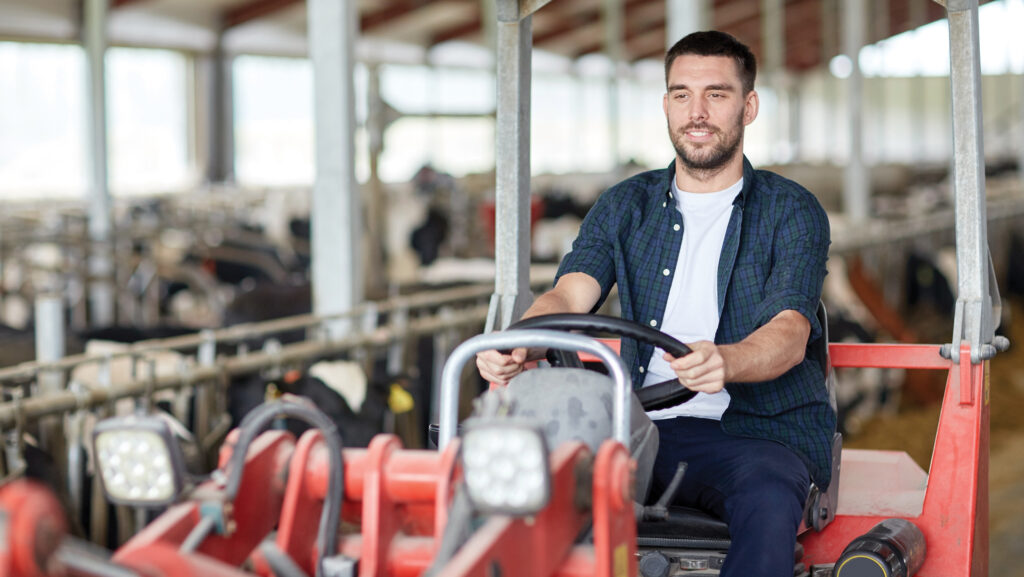Why it is important to do a staff learning review
 © Adobe Stock
© Adobe Stock Treating staff training as a tick-box exercise will still cost a farm money and time, but will not necessarily make a difference to the business.
Seeing it as a priority for progress, however, with additional time spent on reviewing the learning and allowing employees to put their new knowledge into action, will lead to a return on the investment.
See also: What makes a good employer on a dairy farm?
This view comes from management coach Kim Stafford of Sheffield-based company U&I.
She says that it can be difficult to talk in terms of training “payback” for a farm situation.
It is better to consider whether training results in a job done well, a problem solved, or staff being more motivated.

© Adobe Stock
Farmers cannot afford to miss reviewing what they are investing in when training staff.
Even spending five minutes on this is valuable because it can help reinforce new ideas and implement new skills, which leads to effective learning, she says.
“Everyone’s time is precious. When you send people to meetings or on a course, is that valuable time, or do you simply accept it makes no difference to your business? What will be done better, or differently, once the employee comes back?”
Timing of training
Kim thinks that allocating farm budget to training can often be a reactive decision, driven by the courses available.
Instead, it is better to consider what the business wants out of it, or even whether it is an appropriate time in the farming calendar for learning new skills.

Kim Stafford © Kim Stafford
“Don’t put staff on courses such as silaging, mating or drying off, six months before they need it.
“Think of the timeliness and cycle of work. It is wasted money if people can’t apply and use their new knowledge,” she explains.
Thinking about staff training as a way to solve a problem means that reviewing it afterwards is a way to get something back for the time and money spent.
However, this is part of a four-step process:
- The business owner determines what they want to achieve by training staff
- Communicate expectations to the employee
- Find out if the training goals have been achieved. Check this via a review
- Keep the learning alive after training, by using it.
Know your staff
The starting point is to get to know individual staff.
Kim thinks not enough farm owners ask employees what they want to learn, or which jobs they enjoy doing, yet it is important.
She explains that by understanding an employee, it will help to decide the most suitable type of course (in person or online) – and how they can best get the most out of it.
“A good manager wants to make you a more rounded person,” she adds.
“Some introvert types, for instance, may like to read or learn online before they go on a course. You can also get them to talk to someone [already experienced].
“This is warming them up to learn and building their confidence, which makes them more open to learning.”
A classroom is not a natural environment for farm staff, and Kim points out that when people are out of their comfort zone, they do not like being put on the spot by having to interact and answer questions. People need to feel at ease to be able to learn.
Kim suggests preparing all staff before they go off farm to attend a training event. This is best done just one or two days ahead to ensure that whatever is discussed stays fresh in their mind.
The aim is to get them thinking and set them up for success, to be focused on what they are expected to learn.
“Think about why are they going – it’s not just for a day out or a nice lunch,” she says.
Review learning
When staff return to the farm, more time must be set aside to evaluate what they have learned.
Frustration can arise when nothing changes after they go back to work, says Kim. Being busy and distracted with the everyday routine can mean that new skills are not put into practice.
Furthermore, she quotes from the Harvard Business Review: “If new information isn’t applied, we’ll forget about 75% of it after just six days,” she says.
The aim of a learning review, therefore, is to help staff remember what they have learned so it is more likely to be used.
“Review training within 48 hours or people won’t be able to recall what they learned. This gives them time to process it and reflect.
“Some people also like to have a go and try it out as soon as they get back to the farm,” says Kim.
They also need an opportunity to use their new knowledge, otherwise it will “drift to the back of their head”.
But people can lose confidence when they try this and it fails, she points out.
“Putting it into practice might not be like in the classroom, and if it doesn’t work, they could give up, so a review is a way to also learn what didn’t work and why.
“This picks up confidence and they can think about why it hasn’t worked. Then you can get them to have another go,” she explains.
